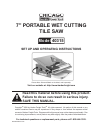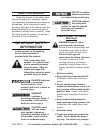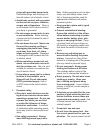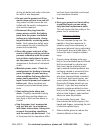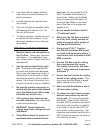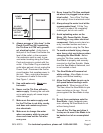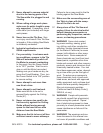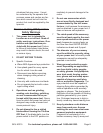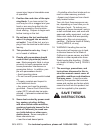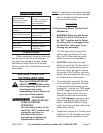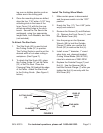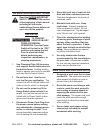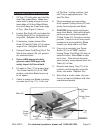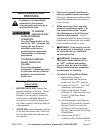Page 7SKU 40315 For technical questions, please call 1-800-444-3353.
27. Never attempt to remove material
stuck in the moving parts of the
Tile Saw while it is plugged in and
running.
28. When cutting a large work piece
make sure its entire length is prop-
erly supported. If necessary, use a
roller stand (not included) with larger
work pieces.
29. Never lean on the Tile Saw. Seri-
ous injury could result if the Tile Saw
is tipped or if the rotating Saw Blade
is accidently contacted.
30. Industrial applications must follow
OSHA requirements.
31. For your safety: In extreme work-
ing conditions, sensors in the Tile
Saw will automatically switch off
the Motor to prevent overheating.
In this event, turn the Power Switch
to its “OFF” position. Wait ve min-
utes or until the Motor has cooled.
Making sure your hands are dry, de-
press the Circuit Breaker. Then, turn
the Power Switch to its “ON” position
to resume cutting.
32. Never attempt to cut more than
one tile at a time.
33. Never attempt to cut freehand.
Make sure the tile to be cut is
pressed rmly against the Cutting
Guide (57).
34. Never cut pieces too small to be
held securely against the Cutting
Guide without leaving enough
space for the hand to be a safe
distance from the Saw Blade.
35. Make sure the tile to be cut off has
sufcient room to move sideways.
Failure to do so may result in the tile
binding against the Saw Blade.
36. Make sure the surrounding area of
the Table is clear with the excep-
tion of the tile to be cut.
37. Always turn off the Tile Saw and
unplug it from its electrical outlet
before changing accessories or
performing any inspection, mainte-
nance, or cleaning procedures.
38. WARNING! Some dust created
by power sanding, sawing, grind-
ing, drilling, and other construction
activities, contain chemicals known
(to the State of California) to cause
cancer, birth defects or other repro-
ductive harm. Some examples of
these chemicals are: lead from lead-
based paints, crystalline silica from
bricks and cement and other masonry
products, arsenic and chromium from
chemically treated lumber. Your risk
from these exposures varies, depend-
ing on how often you do this type of
work. To reduce your exposure to
these chemicals: work in well venti-
lated areas, and work with approved
safety equipment such as those dust
masks that are specially designed to
lter out microscopic particles.
(California Health & Safety Code §
25249.5, et seq.)
39. WARNING! People with pacemak-
ers should consult their physician(s)
before using this product. Opera-
tion of electrical equipment in close
proximity to a heart pacemaker could
cause interference or failure of the
pacemaker.
40. WARNING! The warnings and cau-
tions discussed in this manual can-
not cover all possible conditions and



